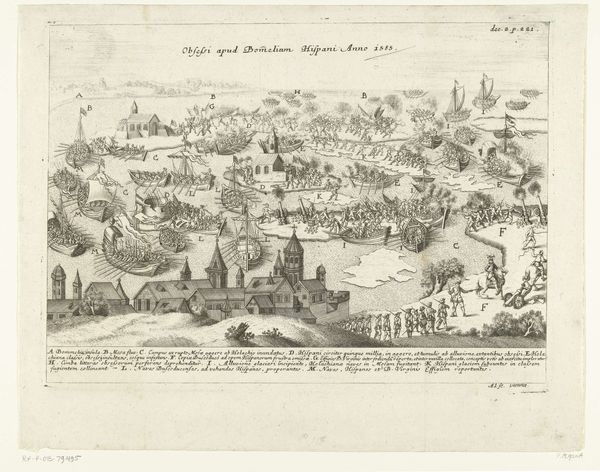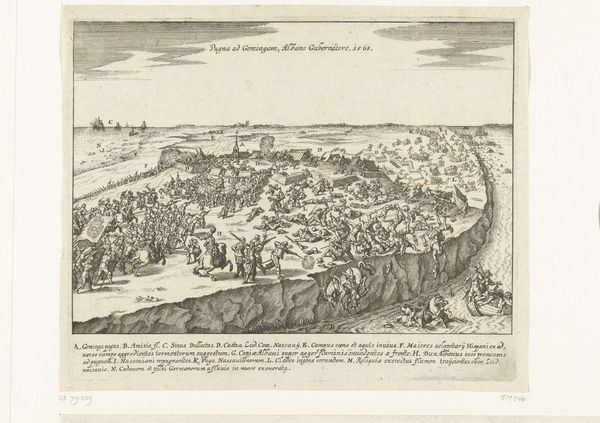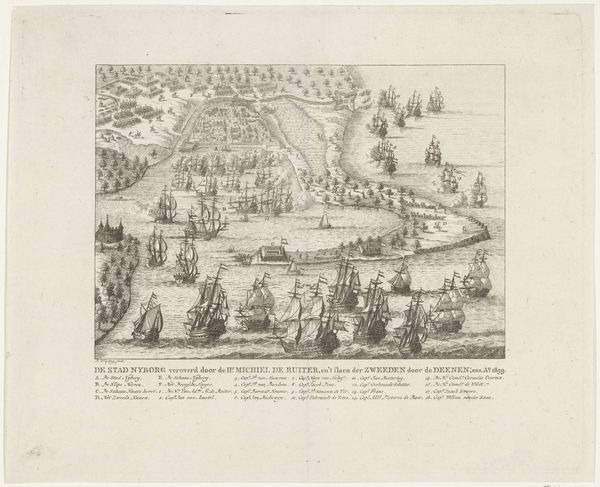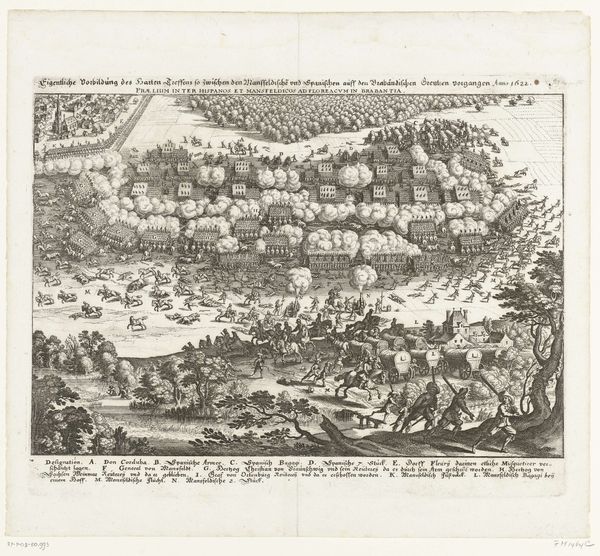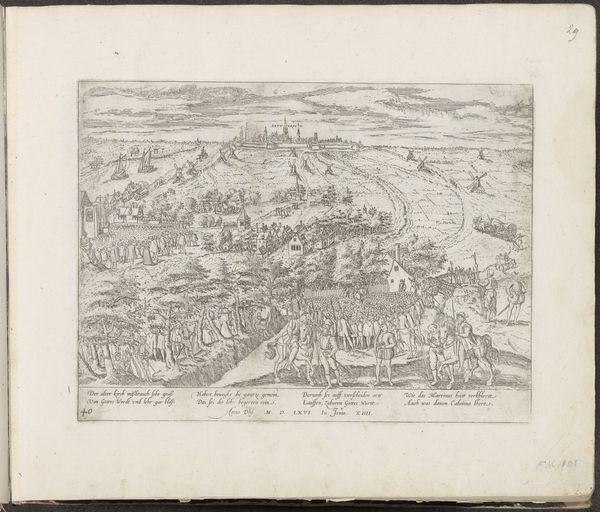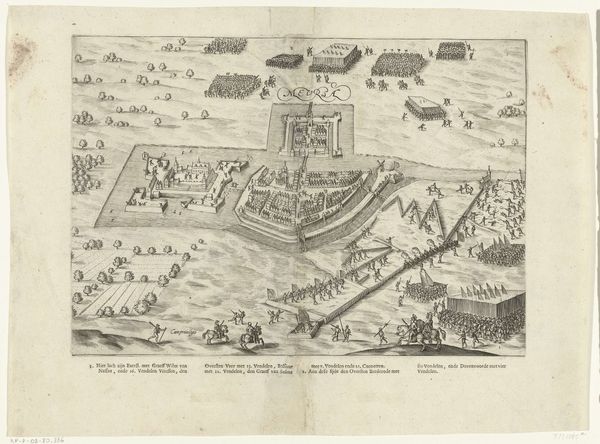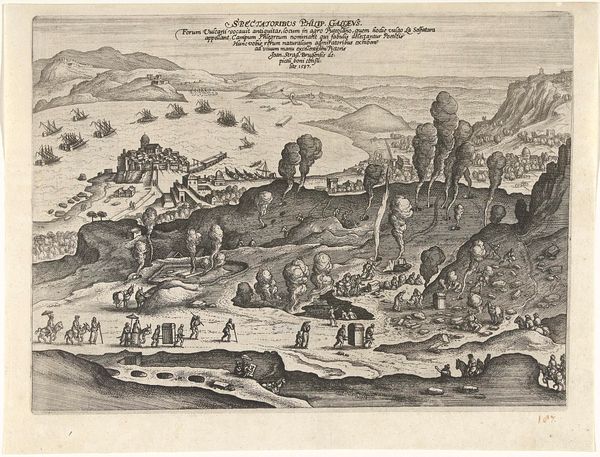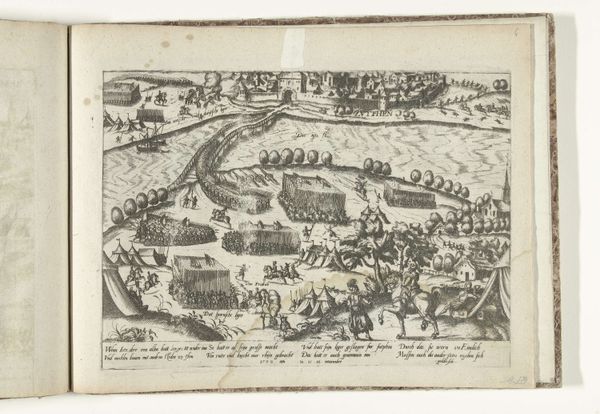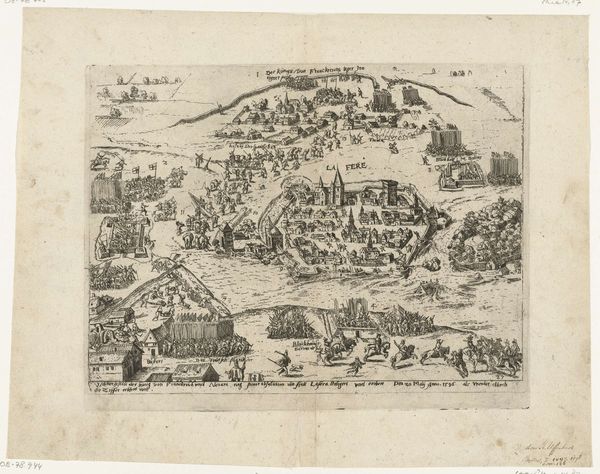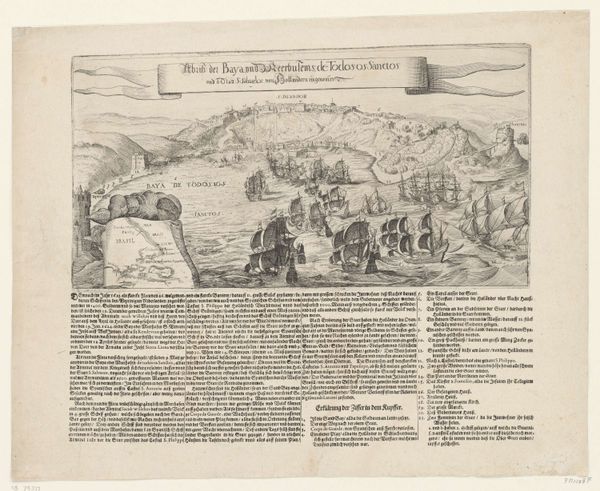
print, engraving
#
narrative-art
# print
#
caricature
#
cityscape
#
history-painting
#
engraving
Dimensions: height 235 mm, width 298 mm
Copyright: Rijks Museum: Open Domain
Editor: This print, titled "Spotprent op de protestanten, 1657" by Emrik & Binger, created between 1877 and 1879, is currently housed in the Rijksmuseum. It appears to be an engraving showing a procession of people traversing a landscape. I find the density of the composition, with so many figures and vehicles, quite striking. How do you interpret this work? Curator: Indeed. This print is fascinating because it reveals the intense socio-political tensions of its time. Looking at it, we see more than just a historical depiction; it's a commentary on religious conflict. Given the artwork title, can you suggest what identities and social issues may be in play? Editor: Well, the title mentions Protestants, so I would imagine there's some conflict regarding religious reformation? And I also noticed the text at the bottom seems to call them out for falsehood. Curator: Precisely. "Spotprent op de protestanten" is not just a label, it tells us about how complex sectarian strife during and following the Reformation was portrayed and used for rhetorical purposes. Now consider the artist's perspective. Given this was created almost two centuries after the depicted time, what narratives could the image reinforce? Could it be promoting specific ideology through the caricature of these Protestant figures and institutions? Editor: That's interesting. So it could be reflecting contemporary biases onto a historical event, framing it in a way that reinforces certain social or political power structures? Curator: Exactly. This piece serves as a potent reminder that historical art is not a neutral reflection of the past. Instead it may be strategically used to maintain or contest power dynamics, particularly across lines of religion. How does this change your perception of the work? Editor: It makes me consider the creator's intention much more. It is an artwork that provides an avenue into discussions on historical interpretation, biases, and social control. Curator: Agreed. This piece highlights the layered context of history, art, and politics. A simple image reveals profound complexities.
Comments
No comments
Be the first to comment and join the conversation on the ultimate creative platform.
